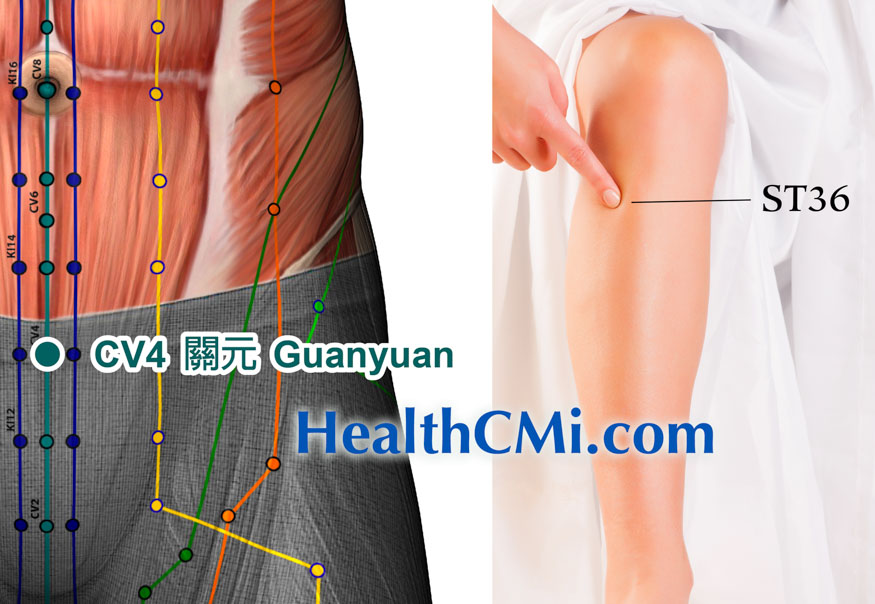
Acupuncture outperforms standard treatment for routine menstrual pain relief. Researchers at the Traditional Chinese Medicine Hospital of Hanzhong conducted a controlled clinical trial comparing the effects of warm needle acupuncture combined with routine pharmaceuticals to standard biomedicine monotherapy for the relief of primary dysmenorrhea. The addition of acupuncture into a treatment regimen significantly improved patient outcomes.
Warm needle acupuncture produced a 95.74% total effective rate while standard biomedicine monotherapy produced an 80.85% total effective rate. The results indicate that the addition of warm needle acupuncture can regulate prostaglandin and β-EP levels and promote uterine artery hemodynamics, thus alleviating dysmenorrhea related pain. [1]
Clinical efficacy was calculated based on a four-level scoring system:
- Recovered: symptoms (abdominal and/or lumbosacral pain, nausea, cold sweats) eliminated, pain level at 0
- Significantly effective: symptoms mostly eliminated or remarkably improved, pain level decreased by 1/3
- Effective: symptoms improved, pain level decreased by 1/3 to 2/3
- Ineffective: symptoms persisted, pain level remained above 2/3 of the initial score
Based on this scoring system, 45 cases in the warm needle acupuncture integrated group were rated above “effective.” Additionally, patients’ prostaglandin and β-EP levels as well as their uterine artery hemodynamics were recorded and evaluated. There were 22 recovered cases, 17 significantly effective cases, and 6 effective cases, resulting in a total efficacy rate of 95.74%. Hemodynamic indicators, including the Resistance Index (RI), the Pulsatility Index (PI), and others also presented greater improvements in the combined therapy group. This indicates that, according to TCM (Traditional Chinese Medicine) principles, warm needle acupuncture and moxibustion promotes local blood circulation and reduces blood stagnation.
A total of 94 patients were recruited for the study. They were randomized into an integrated warm needle acupuncture and pharmaceutical group and a standard pharmaceutical monotherapy group, with 47 cases in each group. There were no statistically significant distinctions between the two groups before treatment commenced.
The standard pharmaceutical control group was prescribed routine analgesic medications based on patients’ specific conditions. In addition to the routine care, patients in the integrated group were given acupuncture treatment.
Acupuncture needles were inserted and manipulated at CV4 (Guanyuan) and bilateral SP6 (Sanyinjiao). Insertion length was at 0.5–1 cun, depending on patients’ physique. Needles were retained after achieving deqi. Two moxa (2 cm) pieces were attached to needle ends and ignited. This procedure was conducted daily for seven days prior to menstruation. The entire treatment course spanned three menstrual cycles.
Another treatment was added to the protocol in addition to the CV4/SP8 protocol listed above. Moxibustion was also applied at CV8 (Shenque). For those who suffered pain before menstruation, ST36 (Zusanli) was added. For those who suffered pain after menstruation, SP6 (Sanyinjiao) was added. For those who suffered pain during menstruation, CV4 (Guanyuan) was applied. For those who suffered pain in between menstrual cycles, LI4 (Hegu) was added.
Patients took a supine position, and 0.40 mm × 40 mm needles were inserted to a depth of 10 mm into the acupoints. They were then twisted and twirled. After triggering a numbing sensation around the abdomen and perineum area, needles were retained for 15–20 minutes. Moxa (2 cm) pieces were added to the needle ends and ignited on the lower end. Five moxa pieces were used for each point. The treatment was performed daily, with six consecutive days and one rest day completing a session. A total of four sessions were administered.
The HealthCMi team finds the double treatment protocol a welcomed addition to research. The findings are consistent with hundreds of other pieces of research emerging within the last few years demonstrating that acupuncture helps to alleviate dysmenorrhea. In this integrated format, the HealthCMi teams sees a path forward toward inclusion of acupuncture for the treatment of dysmenorrhea in conventional medical settings.
Reference:
[1] Sun Feifei, Effect of warm needle acupuncture combined with moxibustion at Shenque point on primary dysmenorrhea of cold coagulation and blood stasis type and its influences on dysmenorrhea symptoms, prostaglandin, and β-EP levels, Clinical Research and Practice, Issue 14, Volume 7, May 2022, 2096-1413(2022)14-0126-05.


